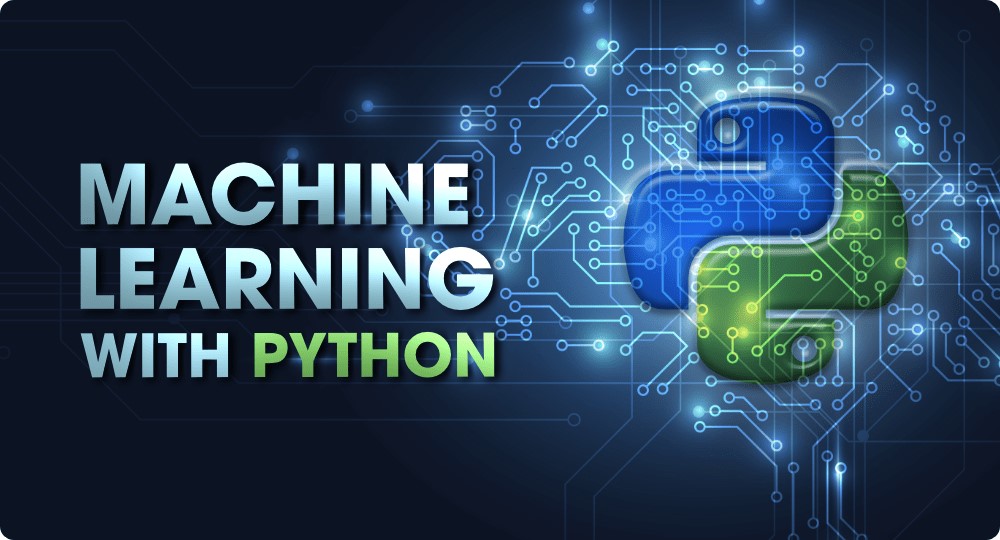AI on the Rise: How Python’s Latest Tools Fuel the Machine Learning Revolution
AI is changing industries and redefining how we live our lives and work. AI impacts a wide range of fields, from health and finance, where organizations use it to understand data, implement automated procedures, and be informed about everything that is happening. It is bolstered by one of the key sources, Python – a robust and highly versatile programming language.
In recent years, Python has gained popularity as the language for developing AI and machine learning applications because it is relatively easy and easily customizable with many libraries or tools.

Python in Machine Learning
Python’s recognition in the machine learning development solutions can be attributed to several factors that make it a perfect choice for developing AI applications:
1. Ease of Use: Python is a simple, easy-to-use language with good legibility. Its clean syntax makes it easy for developers to write spontaneous and compact code, allowing them to model or experiment quickly with machine learning algorithms. This ease of use is especially advantageous for beginners who begin their journey in AI and machine learning.
2. Extensive Libraries: Python has many libraries designed primarily for machine learning and AI. These libraries contain pre-formatted functions and tools for various tasks, including data manipulation, model training, and testing. Some of the most popular libraries widely adopted in the machine learning community are TensorFlow, PyTorch, sci-kit-learn, and Keras.
3. Community Support: Python is quite popular among developers and machine learning enthusiasts with a strong community. This is a helpful community through the online forums, tutorials, and contributions they make in terms of open sources; it makes beginner’s introduction easy and solutions to complex problems by together making experienced developers. Python community is collaborative, and it encourages sharing knowledge as well as innovating in the areas of AI and machine learning.
Related Post – Patenti is building AI powered SaaS products to make patent and other IP entity feature mapping easier for the IP ecosystem.
10 Python’s Latest Tools for AI
Developing new tools and frameworks continues the evolution process in Python’s progress as an AI-focusing platform. These tools are aimed to facilitate the development process, enhance performance levels, and allow developers to create more advanced AI models. Here are some of the latest Python tools that are fueling the machine-learning revolution:
- TensorFlow:
Google gave the world a gift in the form of TensorFlow, an open-source library that has become a rockstar in AI and machine learning projects. It’s like the Swiss Army knife for developers, offering a reliable playground for creating, training, and putting machine learning models to work. TensorFlow is not shy about flexing its muscles in deep learning, and it plays nicely with both CPUs and GPUs, making it a hot favorite among the AI crowd.
A standout feature of TensorFlow is its knack for creating and training neural networks. It has a fancy API called Keras, like the fairy godmother for building deep-learning models. Thanks to TensorFlow, you get a treasure trove of tools and resources to play with, making data visualization and analysis a breeze. It’s the go-to tool for AI wizards and developers weaving their magic in the world of artificial intelligence.
- Keras:
Keras is like the superhero of neural networks, teaming up with the mighty TensorFlow to make creating deep learning models super-fast and easy. It’s like a magic wand for developers, removing all the complicated coding stuff and letting them craft intricate neural networks with just a few simple lines. Keras has many excellent network options, from ones that can see things to remember stuff and even ones that can create things. And the best part? It comes with pre-made models and tools to prepare everything and check how well your creation is doing. Little wonder why both newbies and AI pros love using Keras!
- PyTorch
PyTorch enters the stage as an open-source machine learning library with a dynamic computational graph, making it easier to develop and train neural networks. Developed by the minds of Facebook’s AI Research department, PyTorch enjoys solid popularity among people in artificial intelligence due to its friendly syntax and excellent performance.
A major highlight of PyTorch is its dynamism, as it introduces a touch of flexing in the model creation and debugging process. It seamlessly dances with famous Python pals like NumPy and SciPy, letting developers tap into their existing knowledge and toolkit. PyTorch’s powerful auto feature removes the hassle of gradient calculations, making it a sweetheart for deep learning enthusiasts, whether researchers or hands-on practitioners.
- Scikit-learn
Meet Scikit-learn, the crowd-pleaser in machine learning libraries, offering a treasure trove of algorithms and tools for data analysis and model crafting. This library, built on the shoulders of giants like NumPy, SciPy, and Matplotlib, gives developers a straightforward and consistent interface for various machine-learning tasks.
With Scikit-learn, you can effortlessly prep and transform your data, cherry-pick and evaluate models, and play around with feature selection and dimensionality reduction. It’s a generous supporter of supervised and unsupervised learning, playing well with decision trees, support vector machines (SVMs), and clustering algorithms. Widely embraced in industry and academia, Scikit-learn wins hearts with its user-friendly design and extensive documentation.
- Pandas
Pandas is a powerhouse library tailored for data manipulation and analysis in the Python realm. Boasting versatile data structures like DataFrames and Series, Pandas takes the reins for efficiently handling structured data. It becomes your go-to companion for importing, cleaning, transforming, and analyzing data – an indispensable ally for any AI undertaking.
Pandas shines with its prowess in handling missing data and orchestrating seamless data alignment. Pandas empower developers to navigate complex data manipulations effortlessly by offering robust data aggregation and grouping functions. Its intuitive syntax and expansive functionality have etched Pandas as the default library for data analysis in the Python ecosystem.
- NumPy
NumPy, which stands for Numerical Python, surfaces as a primary library in the Python world of scientific computing. Speaking from higher ground, NumPy plays the role of lynchpin for many Python libraries such as Pandas and SciPy owing to its support for massive multi-dimensional arrays and matrices in addition to an immense repository of mathematical operations that can be computed with array actions.
NumPy’s trump card lies in its efficient implementation, ensuring swift execution of numerical computations. The library hosts an array of mathematical functions spanning linear algebra operations, Fourier transforms, and random number generation. With potent array manipulation capabilities, NumPy proves its mettle as a must-have tool for AI practitioners navigating vast datasets and intricate mathematical operations.
- Matplotlib
Matplotlib steps into the spotlight as a comprehensive Python library dedicated to data visualization. Unveiling an arsenal of plotting functions and tools, Matplotlib empowers developers to weave captivating tales through high-quality charts, graphs, and plots. It unfolds a spectrum of visualization formats, from line and scatter plots to bar plots and histograms.
Matplotlib’s standout feature lies in its prowess in crafting publication-quality figures, allowing customizable layouts and styles. The library goes beyond static visuals, supporting interactive plotting and animation – an ideal fit for exploratory data analysis. With a rich repository of documentation and an engaged community, Matplotlib has entrenched itself in academia and industry, serving as the canvas for illustrating AI research and insights.
- SciPy
Say hello to SciPy, a library that builds upon NumPy’s foundations and extends its capabilities for scientific computing in Python. Imagine having a toolkit equipped with modules for optimization, interpolation, linear algebra, signal processing, and more – that’s SciPy in action. With SciPy, delving into intricate scientific computations becomes a breeze.
In the realm of SciPy, modules like scipy. optimize take the lead, providing a treasure trove of algorithms for optimization challenges. The lineup includes scipy. integrate for numerical integration, scipy. stats for statistical functions, and scipy. signal for tasks in signal processing. SciPy’s arsenal of modules positions it as a powerhouse for AI practitioners tackling scientific and engineering applications.
- Theano
Meet Theano, a library designed to redefine how developers craft, optimize, and evaluate mathematical expressions efficiently. Picture a high-level API seamlessly integrated with NumPy, supporting CPUs and GPUs. Theano excels in automatically optimizing computations and generating speedy numerical code.
Theano’s standout feature is its support for symbolic computation, allowing developers to define mathematical expressions symbolically. It also throws in automatic differentiation, simplifying the calculation of gradients for optimization algorithms. With its prowess and efficient computation, Theano has found a niche in deep learning.
- OpenCV
OpenCV steps into the limelight as a library dedicated to the captivating realms of computer vision and image processing. Envision a toolkit brimming with functions and algorithms for image and video analysis, object detection, and feature extraction – that’s the magic of OpenCV. It emerges as a go-to for AI endeavors demanding image recognition, video tracking, and augmented reality.
OpenCV’s prowess extends to real-time processing and hardware acceleration, complemented by a Python API seamlessly integrating with other Python libraries. With its decadent array of image processing functions, OpenCV stands tall as an indispensable companion for AI practitioners embarking on computer vision projects.
Conclusion
The most recent tools of Python have been instrumental in driving the machine learning revolution forward. Python is a perfect language for AI and machine learning development solutions projects as it’s easy to use, highly flexible, and has many libraries. With the introduction of new tools and frameworks, Python is placed to continue its leadership in the AI revolution. The continual growth in Python’s AI ecosystem helps democratize AI, providing access to a wider audience and speeding up innovation within this domain. With the advancement of AI, Python’s most recent set of tools will become instrumental in determining how machine learning develops to transform our methods for tackling complex issues.
Also Read:
1. Meet Nikhilesh Tayal – founder of AI ML etc
2. Patenti is building AI powered SaaS products to make patent and other IP entity feature mapping easier for the IP ecosystem.
3. AI startup, Kombai raises $4.5M from Stellaris Venture Partners and Foundation Capital



